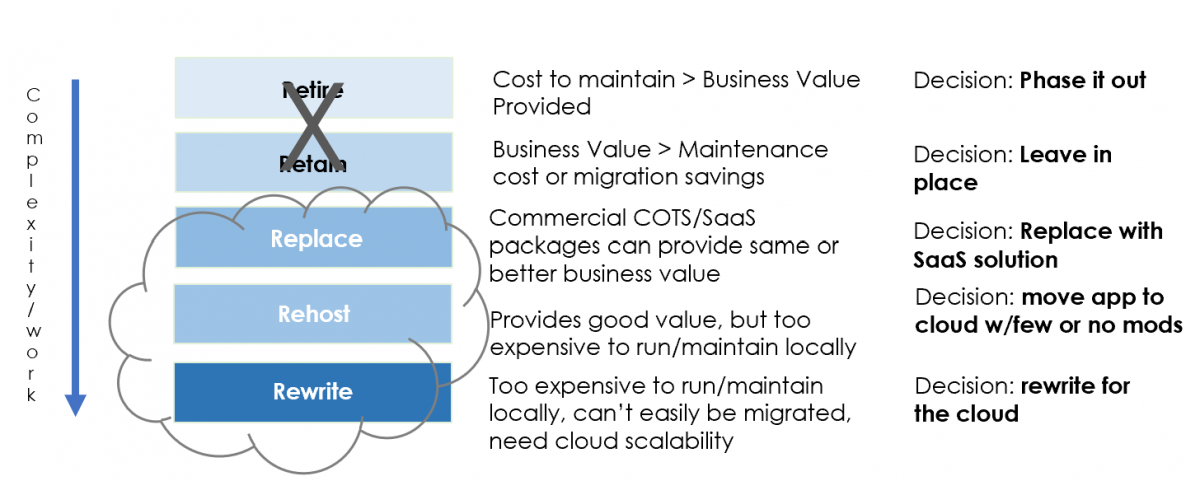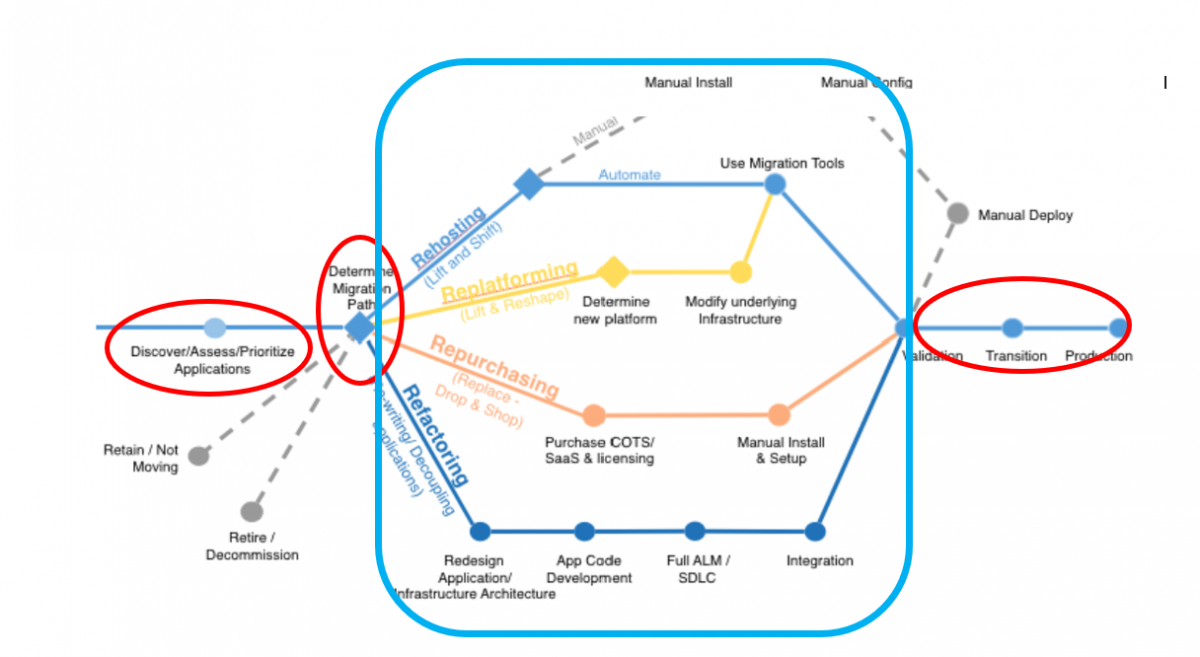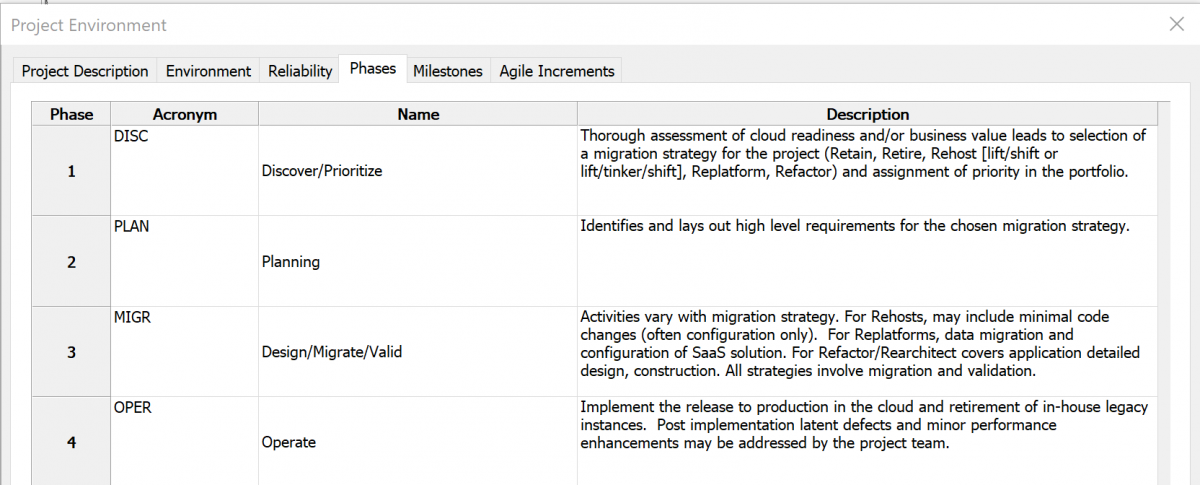Cloud computing is revolutionizing the way firms host software applications, store and access data, and manage IT infrastructure. Like any quantum leap in technology, the move to the Cloud brings both opportunities and challenges. The promise is compelling: flexible, pay-for-what-you-use pricing with built-in surge capacity and redundancy sounds much more cost effective than building for maximum demand (and then paying to maintain all that excess capacity). But the challenges are considerable as well. A recent public Cloud adoption survey found that only 43% of respondents considered their most recent public Cloud migration an overall success.
These details suggest that the inability to estimate Cloud migration projects is a big problem:
- 74% were held back by lack of relevant skills in their organization.
- 40% underestimated application transformation costs.
- Only 38% accurately predicted Cloud platform costs.
- 58% found runtime costs higher than estimated.
- Firms also underestimated non-platform costs associated with running and maintaining service quality on a public Cloud.
When performing cost-benefit calculations, timely, accurate estimates are key to deciding when it makes sense to invest in new technologies. If you can’t predict the time and resources needed to migrate individual workflows to the Cloud (or maintain them, once they go live), how will you decide which projects and migration paths are likely deliver a solid return on investment and which you should avoid or defer?
IT departments moving to the Cloud have a thousand decisions to make. All of them require good data and a solid grasp of business goals, current capabilities, and resources. Special purpose tools for assessing Cloud readiness, application discovery, vendor pricing, and governance can help you gather detailed data and compare vendors. But there’s more to Cloud migration than just picking the right technology. You also need a simple, practical way to predict future staffing and skills gaps, present options to stakeholders and management, build support, and adjust plans when conditions and priorities change. This is where general purpose estimation tools can help you quickly create and revise estimates, establish repeatable estimation processes, sanity check plans against proven performance, and mitigate known – and hidden - migration risks.
Plan for Success
Since 1978 QSM, developers of the SLIM-Suite of project estimation, tracking, and benchmarking tools, has provided time tested software, services, research, and support to help clients negotiate achievable project targets and plan more effectively. Our 42 years of experience show that while technology changes constantly, estimation challenges do not. Without empirical performance baselines and a thorough understanding of schedule, effort, and quality tradeoffs, firms consistently underestimate the time and resources needed to execute projects.
While it’s tempting to focus on Cloud services as the biggest estimation cost driver, costs associated with people, training, and skills can comprise over half of migration costs. Identifying unrealistic expectations up front – before they drive labor costs and defects through the roof – lets you plan for success.
Are You Cloud First or Cloud Smart?
Will your migration decisions be driven by policy (Cloud First) or return on investment (migrating workflows only if the cost or performance offer clear improvements over your current cost of ownership and capacity)? There’s no one right answer, but if your goal is to reduce your current total cost of ownership (TCO) and avoid post-migration sticker shock, selecting the most efficient migration path is imperative.
Migration paths progress in complexity and cost from non-migration options like Retiring/Retaining in-house workflows to Replacing with a SaaS solution, Rehosting (also known as Lift/Shift or Lift/Tinker/Shift), all the way to Rewriting applications to use Cloud native architecture and fully leverage the Cloud’s scalability and performance. The benefits of rearchitecting apps for Cloud can be significant. Unfortunately, so are the costs in time, staff, and money! This is where aligning your Cloud migration strategies with your business goals is essential.

There’s a big difference between Cloud First (a strategic decision to consider Cloud solutions first wherever possible) and “Cloud-only” (a commitment to moving your entire IT infrastructure to the Cloud, regardless of ROI). For many firms, budgets and staff constraints provide powerful incentives to optimize Cloud spending. If your older applications are poorly suited to Cloud deployment and maintenance costs are low, retiring or leaving them in place lets you focus migration efforts on workflows that deliver the highest cost savings or performance improvements.
Two case studies – both involving firms that started off Cloud First – show that the “right” strategy is not necessarily carved in stone. Stephen Orban, General Manager for AWS Data Exchange and author of Ahead in the Cloud, describes how Netflix rearchitected and migrated their entire portfolio to the Cloud. The impetus was a 2008 service outage that lasted three days and cost the firm lost revenue and customers. Though their journey to the Cloud took longer than expected (seven years), it delivered the flexibility, scalability, and speed of innovation to stay ahead of a rapidly evolving market. It’s hard to imagine today’s streaming services without the Cloud!
Like Netflix, Dow Jones started off Cloud First under Orban’s (then CIO) aegis. But the unexpected loss of a major data center dictated a quick pivot from Rearchitecting their entire portfolio to Rehosting (Lifting/Shifting) some in house applications. What seemed like a setback at the time produced a surprising bonus: immediate cost savings of 30% and faster, lower cost migrations. The migration teams also discovered it was actually easier to rewrite applications once they were in the Cloud.
When priorities or market conditions change, the ability to quickly assess alternatives and adjust plans can mean the difference between migration success and failure.
Different Migration Paths, Different Estimation Strategies
Because not all Cloud migration paths result in modifications to data or applications (coding or configuration) or even actual migration to the Cloud, estimation inputs and methods must be flexible enough to use with a wide range of lifecycles, technologies, and project types. Though most Cloud adopters eventually move in the direction of Agile and DevOps, nothing about initially migrating projects to the Cloud dictates a particular development methodology or sizing approach.
QSM’s estimation model has been in use for over 40 years across a broad array of technologies, project types, and industries. The model groups lower level activities into four high level lifecycle phases. The schematic below shows how the activities in each migration path can be mapped in SLIM-Estimate.

Activities inside the blue square comprise the main Migration phase (always included). Depending on the scope and purpose of the estimate, the Discover/Prioritize, Planning, and Operate phases can be included or excluded. Phase names and descriptions can be customized to reflect terms already in use by various projects or teams.

QSM can help you model a variety of lifecycles, staffing strategies, and sizing techniques that work for your development team to empower them to make the right decisions regarding their cloud migration programs. These decisions are often needed when only a small amount of project information is available and there is tremendous uncertainty.
To manage uncertainty and generate reliable estimates, the project analyst would simply enter some basic macro-level information into the QSM empirically based tool such as ballpark size information, a productivity measure calculated from the client’s own historical data, and some early staffing information. If the client does not have their own historical data, they can leverage QSM industry analytics.
Once this information is entered into the estimation tool, the “big picture” plan for cost, reliability, duration, and scope is generated along with the risk trade-off analysis needed to make early “go or no go” decisions. Data driven analytics can be communicated to stakeholders early in the planning process so everyone involved with the decision is on the same page and the project team can move forward with confidence.
For a detailed demonstration, watch our “Demystifying Cloud Migration Using Estimation” webinar.
Summary
Firms migrating to the Cloud often expect big cost savings. But most don’t realize the hoped-for gains.
Dedicated migration tools are great for assessing Cloud readiness, mapping dependencies, and comparing vendors, but they don’t address one big reason so many Cloud projects overrun their budgets and schedules. They simply aren’t designed to quickly generate and compare multiple plans or account for complex interactions between schedule, staffing, and defects. With labor costs comprising over 50% of Cloud migration costs, 74% to 96% of IT decision makers struggling to secure scarce skills, and 86% paying premiums for in-demand talent, identifying unrealistic schedule and staffing plans is more important than ever. To see how you can compare estimates to established performance baselines and highlight plans that are inconsistent with your demonstrated capability (too optimistic on cost and schedule), contact QSM.
